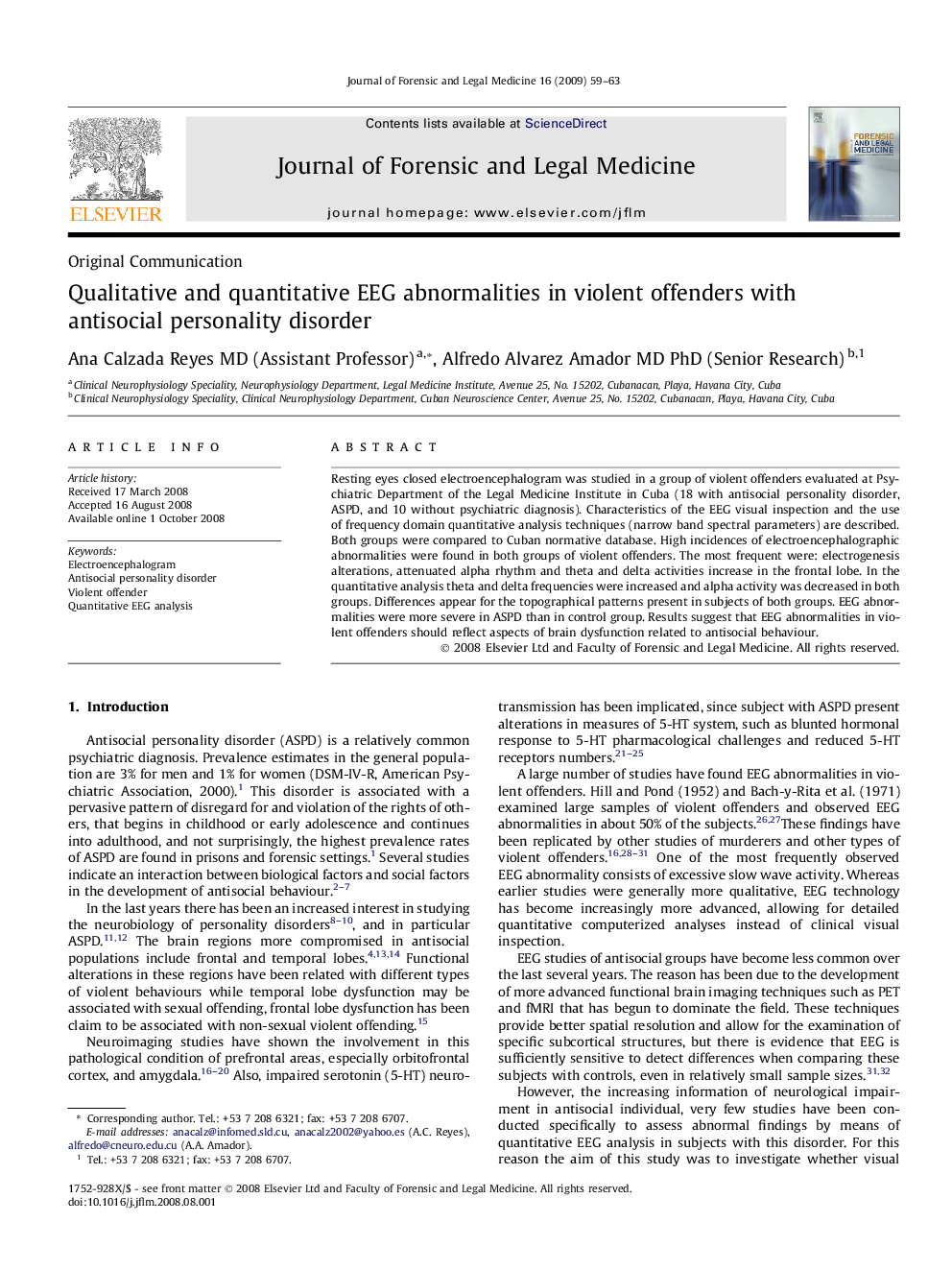| Article ID | Journal | Published Year | Pages | File Type |
|---|---|---|---|---|
| 102894 | Journal of Forensic and Legal Medicine | 2009 | 5 Pages |
Resting eyes closed electroencephalogram was studied in a group of violent offenders evaluated at Psychiatric Department of the Legal Medicine Institute in Cuba (18 with antisocial personality disorder, ASPD, and 10 without psychiatric diagnosis). Characteristics of the EEG visual inspection and the use of frequency domain quantitative analysis techniques (narrow band spectral parameters) are described. Both groups were compared to Cuban normative database. High incidences of electroencephalographic abnormalities were found in both groups of violent offenders. The most frequent were: electrogenesis alterations, attenuated alpha rhythm and theta and delta activities increase in the frontal lobe. In the quantitative analysis theta and delta frequencies were increased and alpha activity was decreased in both groups. Differences appear for the topographical patterns present in subjects of both groups. EEG abnormalities were more severe in ASPD than in control group. Results suggest that EEG abnormalities in violent offenders should reflect aspects of brain dysfunction related to antisocial behaviour.
